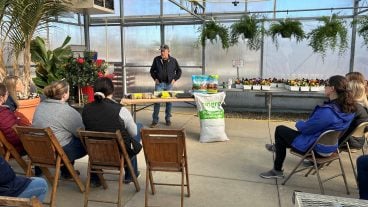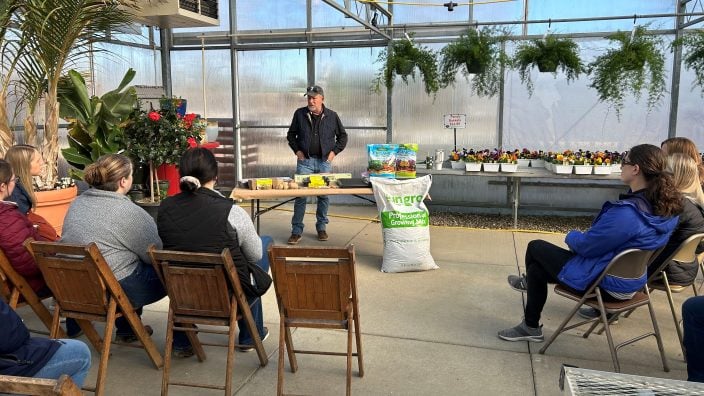Farmer’s Guide to Trucking Regulations available to Ohio Farm Bureau members
The guide includes a farm driver checklist, overview of state and federal regulations and exemptions, CDL qualifications and more.
Read More
Perennials are herbaceous plants that live for two seasons or more. For the vegetable and herb grower, perennial plants can save time and effort with great rewards. Though most perennial vegetables don’t survive frost or cold winters, there are a few hardy types that can withstand our Ohio winters.
When planting perennial vegetables and herbs, their placement should be thought of as permanent. Determine the best long-term place for them in the garden before planting.
Asparagus (Asparagus officinalis)
Rhubarb (Rheum rhabarbarum)
Fresh herbs are a great way to add flavor to a homemade dish. If you wish to substitute dry herbs for fresh the exchange is as follows: fresh herbs to dry are 1 tablespoon fresh for every 1 teaspoon dried. The following is an easy list of the most commonly grown perennial herbs, or at least the ones I grow and use.
Chives (Allium schoenoprasum)
Greek Oregano (Origanum vulgare ssp hirtum)
Thyme (Thymus vulgaris)
Keep in mind these are just a handful of perennial plants to grow in your vegetable and herb garden. Just remember to do your homework and read the tags to know what you’re growing and how best to care for and use it.
Barbara Arnold is green corps coordinator at Franklin Park Conservatory.


The guide includes a farm driver checklist, overview of state and federal regulations and exemptions, CDL qualifications and more.
Read More


Katie Share of Columbus has been named ExploreAg and Youth Development Specialist for Ohio Farm Bureau.
Read More

Mary Klopfenstein of Delphos has been named Young Ag Professional and Ag Literacy Program Specialist for Ohio Farm Bureau.
Read More

The plan has been updated to give sole proprietors access to more rate stability and a smart solution that offers potential savings on health care.
Read More

The American Farm Bureau Federation, in partnership with Farm Credit, is seeking entrepreneurs to apply online by June 15 for the 2025 Farm Bureau Ag Innovation Challenge.
Read More

Adele Flynn of Wellington has been elected treasurer of the Ohio Farm Bureau Federation and now holds the third highest elected office in Ohio’s largest and most influential farm organization.
Read More

Producers are urged to work with their veterinarian to practice enhanced biosecurity measures and review and limit cattle movements within production systems.
Read More

The changing seasons bring with them the need to thoroughly inspect pole barns for any damages that may have occurred during the winter months.
Read More

Hundreds of Ohio businesses and sole proprietors are raving about Ohio Farm Bureau’s Health Benefits plan with lower, predictable costs and easy enrollment and administration options.
Read More

AgriPOWER Class XIV spent a few days in March in Medina and Wayne counties learning more about northern Ohio agriculture from leaders in Ohio Farm Bureau.
Read More